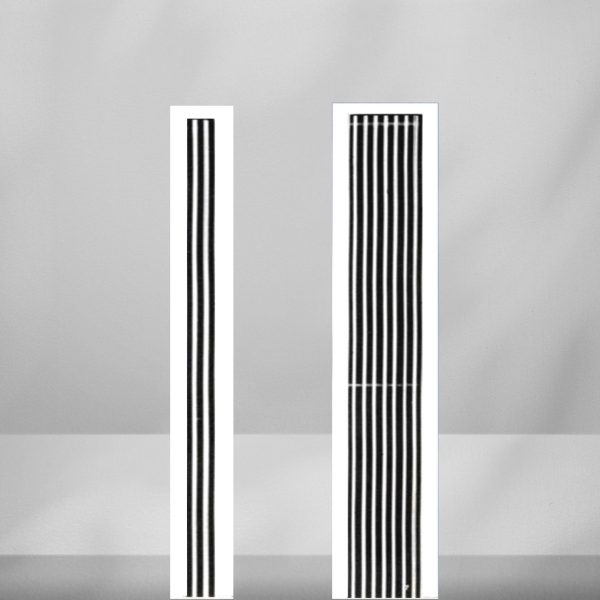Linear Bar Grille
Dania Air Linear Bar Grille is a type of ventilation grille used in HVAC (Heating, Ventilation, and Air Conditioning) systems. It’s designed to cover air openings or ducts while allowing air to pass through. These grilles consist of long, narrow bars arranged parallel to each other, creating a linear pattern across the surface. Here are some common product details about Linear Bar Grilles:
Material: Linear Bar Grilles are typically constructed from materials such as aluminum, steel, or occasionally, stainless steel. The choice of material often depends on factors like durability, aesthetics, and environmental conditions.
Construction: They are designed with a series of horizontal or vertical bars, usually spaced evenly apart. The bars may vary in thickness, depth, and spacing to achieve different airflow patterns and aesthetic preferences.
Finishes: Linear Bar Grilles can come in various finishes, including natural anodized, powder-coated, painted, or even wood veneer finishes. These finishes serve both functional and aesthetic purposes, offering durability, corrosion resistance, and blending with interior design.
Mounting Options: These grilles can be surface-mounted or recessed into walls, floors, or ceilings, depending on the installation requirements and design preferences.
Sizes and Configurations: Linear Bar Grilles are available in different sizes and configurations to suit various airflow requirements and architectural designs. Standard sizes are commonly available, but they can also be customized to fit specific dimensions.
Airflow Direction and Pattern: These grilles can be designed for horizontal or vertical airflow patterns. The orientation and spacing of bars can be adjusted to control the direction and distribution of airflow.
Use and Applications: Linear Bar Grilles are commonly used in commercial, industrial, and residential buildings for air intake or exhaust in areas like offices, lobbies, hallways, and other HVAC applications.
Optional Features: Some Linear Bar Grilles may come with optional features like opposed blade dampers for airflow control, removable cores for easy cleaning, or special designs for architectural integration.
Performance and Efficiency: The design of these grilles focuses on achieving optimal airflow while minimizing pressure drops and noise levels, contributing to efficient HVAC system performance.
Regulatory Compliance: Manufacturers ensure that these grilles comply with relevant industry standards and regulations for safety, performance, and quality.
When selecting Linear Bar Grilles, it’s essential to consider factors such as airflow requirements, aesthetic preferences, material durability, installation ease, and compatibility with the overall HVAC system. Customizations and specific requirements can often be accommodated by various manufacturers to meet the needs of different projects.

